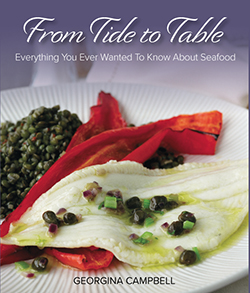Article PAIRING FOOD & BEER
Craft Beer and Christmas Cheer - Beer and Food Pairing Tips for Christmas Dinner

 Craft beer is perhaps the biggest success story of Irish food and drink over the last couple of years and we are delighted to introduce our new columnist Kristin Jensen, who is not only one of Ireland’s top food bloggers – she just happens to be an expert on pairing food and beer!
Craft beer is perhaps the biggest success story of Irish food and drink over the last couple of years and we are delighted to introduce our new columnist Kristin Jensen, who is not only one of Ireland’s top food bloggers – she just happens to be an expert on pairing food and beer!
By now you’re probably starting to plan all the different courses of Christmas dinner, but have you thought yet about what you’ll be pouring? Wine will be getting a lot of press in the run-up to the big feast, but what about beer? Did you know that beer is actually a better match with food than wine?
• The Irish craft beer industry is booming, with more selection than ever before, and the range of flavours and versatility of craft beer means there’s a match for any meal, be it a curry or Christmas dinner.
• The bubbly carbonation in beer gives a refreshing lift to your palate, which is especially welcome at a big meal like Christmas dinner.
• Beer can be used to complement or contrast the flavours in food. The caramelised and roasted flavours of some beers match particularly well with the roasted meats traditionally served at Christmas dinner.
Another point in craft beer’s favour is price. A top-quality bottle of wine could set you back anything from €20 and up, but a bottle of artisan beer is only €2 or €3, giving you greater scope to experiment without breaking the bank.
The good news is that Irish craft beer has never been easier to buy. BradleysOffLicence.ie, Drinkstore.ie and TheBeerClub.ie all carry a wide range of Irish craft beers and deliver nationwide – a good excuse to stock up! All the beers I’ve suggested here are available at these retailers, so they’re within anyone’s reach.
Be it a zesty IPA, a crisp, clean blonde ale, a chocolatey stout or a wintry spiced seasonal to sip by the fire, there’s a beer to match whatever you’re serving, so why not give Irish craft beer a place at the table this Christmas? The right beer matched with the right food will make the meal sing.
.jpg) Pre-dinner snacks
Pre-dinner snacks
If you want something to sip while the nibbles are being passed around, start off with an all-purpose lager, a light pilsner or even a wheat beer.
Beers to try: O’Hara’s Curim Gold, Porterhouse Hersbrucker Pilsner, Whitewater Brewery Belfast Lager
Goose
Goose is very rich, so you want a zingy ale or IPA to cut through the fat and refresh your palate.
Beers to try: Eight Degrees Howling Gale Ale, Galway Hooker Irish Pale Ale, O’Hara’s Irish Pale Ale
Ham
A fruity ale is a good complement to a traditional glazed ham, which is both salty and sweet. An Oktoberfest märzen lager is also a good match.
Beers to try: Dungarvan Copper Coast, Eight Degrees Ocktober Fest Marzen Style, O’Hara’s Irish Red, Whitewater Brewery Clotworthy Dobbin
Turkey
If you want to complement the roasted flavours of a turkey, serve a malty red ale or a dubbel. Otherwise, a crisp, clean blonde ale is a good all-round choice if you want a beer that will contrast with the meat and all the different side dishes without overpowering the food.
Beers to try: College Green Brewery Belfast Blonde, Dungarvan Helvick Gold, Eight Degrees Sunburnt Irish Red, O’Hara’s Irish Red, White Gypsy Belgian Dubbel
Christmas pudding and chocolate
A dark, dense Christmas pudding or cake cries out to be paired with an equally dark stout or porter, while the espresso and chocolate undertones in many stouts are a natural partner for chocolate desserts.
Beers to try: O’Hara’s Leann Folláin Extra Irish Stout or West Kerry Brewery Carraig Dubh Porter for Christmas pudding; Dungarvan Black Rock Stout or Trouble Brewing Dark Arts Porter for chocolate
For contemplative sipping
If you’re looking for one final beer to finish off the feasting, go for a heavy-hitting special edition, such as the Porterhouse Barrel Aged Celebration Stout, which has been matured in Kilbeggan Irish whiskey casks and has a whopping 11% ABV – this is one to be sipped in a snifter. Or if you want to finish on a sweeter note, go for the orange, clove and cinnamon spices in the Eight Degrees A Winter’s Ale or the berry, coffee and toffee flavours of the White Gypsy Yule Ól.
Beers to try: Eight Degrees A Winter’s Ale, Porterhouse Barrel Aged Celebration Stout, White Gypsy Yule Ól
Kristin Jensen is a freelance editor specialising in cookery and food books and has worked with many of Ireland's top food writers and chefs. She writes the Edible Ireland blog and is a co-founder of the Irish Food Bloggers Association
Top Tips for Beer and Food Matching

.jpg) Craft beer is one of the biggest recent success stories of Irish food and drink. This month, in the first of a series which will show how to get the best from some specific food and wine pairings, our expert columnist and food blogger Kristin Jensen gives her top tips for beer and food matching in general.
Craft beer is one of the biggest recent success stories of Irish food and drink. This month, in the first of a series which will show how to get the best from some specific food and wine pairings, our expert columnist and food blogger Kristin Jensen gives her top tips for beer and food matching in general.
Here’s something that might surprise you – beer is a better match with food than wine. I like a glass of white wine with seafood or a full-bodied red with a steak as much as the next person, but beer simply ticks more boxes and shines where wine falls short.
For instance, the bubbly, cleansing carbonation in beer gives a refreshing lift to your palate, leaving you ready to taste each bite fresh. This is especially true for rich, fatty foods and cheese. Plus beer has a greater range of flavours than wine. Wine is restricted by its single ingredient – grapes – but beer can play with different variations of barley, hops, yeast and even spices, chocolate, nuts, fruit and vegetables (pumpkin beer, anyone?).
The range of flavours and the versatility of craft beer mean there’s a match for just about any food, from chilli to chocolate. Here are a few general tips to get you started with matching beer and food.
• Complement or contrast? This is the first thing to decide when matching beer with food. Do you want to highlight the similar flavours in the beer and food or do you want to use their differences to contrast them instead? For example, a hoppy IPA can both complement a spicy curry or contrast rich, smoked meat, while an earthy stout complements chocolate but is also a classic contrast to the delicate sweetness of oysters.
• Pair like with like. A good rule of thumb is that delicate beers go well with delicate foods – think wheat beers and blonde ales with seafood. A strong, dark beer would overwhelm light flavours. Those same strong beers are a natural match for heartier dishes though, such as stout and red ales with roasts and stews.
• Drink seasonally. You’ll naturally want a crisp, delicate pilsner as a refreshing lift on a hot summer’s day, while an earthy porter is just the thing for sipping by a crackling fire in the pub. It follows, then, that those same styles are often a good match for seasonal dishes – a lager is great with a barbecue, while a porter is perfect for autumn game.
• Pace your flavours. If you’ll be matching different beers to different courses of a meal, start with the lighter-flavoured beers and progress to the bigger, bolder beers, not the other way around, otherwise the stronger beers will overpower the lighter styles.
• Translate your favourite wine style into beer. If you already know what wine styles you like or what wines you like with food, you can roughly translate them into a beer style. If you like light-body wines such as Sauvignon Blanc or Pinot Grigio, go for a lager, pilsner or wheat beer; if you would have served a medium-body wine like Merlot, Zinfandel or Syrah, opt for an ale or IPA; or if you prefer Cabernet Sauvignon or Malbec, try a stout or porter.
 And here are some general guidelines for matching specific foods to common styles of Irish craft beer:
And here are some general guidelines for matching specific foods to common styles of Irish craft beer:
• BBQ: Lager, red ale
• Burgers: Pale ale, IPA, red ale
• Chicken: Pale ale, red ale
• Chocolate: Stout
• Chowder: Pilsner
• Indian food: Wheat beer, pilsner, pale ale (mild); IPA, pilsner (spicy)
• Game: Ale, stout, dubbel
• Lamb: Stout, red ale
• Pizza: Lager, red ale
• Seafood: Lager, wheat beer, blonde ale
• Smoked fish and meat: IPA
• Spicy food: Lager, IPA
• Steak: Red ale, stout, dubbel
• Stews: Ale, stout
Now that you have a few basic tips and pairings under your belt, where can you buy craft beer? BradleysOffLicence.ie, Drinkstore.ie and TheBeerClub.ie all carry a wide range of Irish and international craft beers that you can buy online and they deliver nationwide. Or talk to your local grocery store or off license manager to ask them to stock beers from your favourite craft brewery.
Sláinte!
Kristin Jensen is a freelance editor specialising in cookery and food books and has worked with many of Ireland's top food writers and chefs. She writes the Edible Ireland blog and is a co-founder of the Irish Food Bloggers Association
Top Tips for Beer & Food Matching - Beer & Chocolate
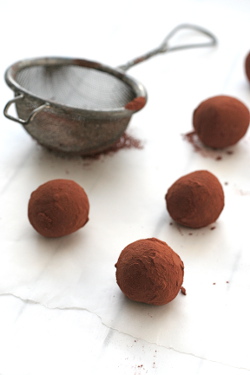

In the second of a series which shows how to get the best from some specific food and beer pairings, our expert columnist and food blogger Kristin Jensen gives her tips on matching beer and chocolate. Prepare to be surprised!
Beer and … chocolate? It’s probably not the first pairing that springs to mind, but they’re a beautiful match. ‘No wine can match chocolate desserts nearly as well as the right beer,’ writes Garrett Oliver in The Brewmaster’s Table, and stout or porter are the perfect partners for chocolate and chocolate desserts.
Pairing stout and chocolate is a case of complementing (as opposed to contrasting) the common flavours to pick up on the toasted, roasted and bitter flavours in each of them. The roasted malts in stouts and porters often naturally lend coffee and chocolate flavours to the beer, while Lucy Saunders, writing in The Best of American Beer and Food, says that ‘the flavours of dark roasted barley meld with the aromatics of roasted cocoa and the buttery notes of the finished chocolate’. Sometimes chocolate is even added directly to the beer itself in the brewing process.
‘Best of all,’ writes Lucy Saunders, ‘many styles of craft beer make the flavours of chocolate expand on the palate. The combination of malt and carbonation creates a textural pairing on the palate. Often, wine can’t stand up to the richness and bittersweet flavours of chocolate, while craft beer extends and lifts the flavours of chocolate.’ In other words, the right match can make the chocolate taste even better – what’s not to like about that?
Stout works exceptionally well in baked goods (think chocolate stout cake or porter brownies), but for a Valentine’s Day treat that will be a hit with guys and girls alike, try these chocolate stout truffles with a deep, dark, bitter edge – just like love?
Also, with Valentine’s just marking the beginning of the spring chocolate season, which goes pretty much over the top at Easter, keep this recipe handy: make them egg-shaped instead of the usual balls, and these truffles will be just the ticket for your Easter petits fours.
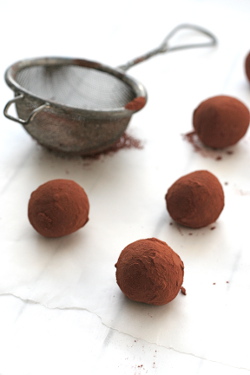
Makes about 24 truffles
Dungarvan Brewing Company’s Coffee and Oatmeal Stout, Eight Degrees Brewing Company’s Knockmealdown Porter or Trouble Brewing’s Dark Arts Porter would all be excellent choices, either to use in the truffles themselves or to sip alongside them.
250 ml stout
200 g dark chocolate, chopped or broken into pieces
100 ml double cream
a few tablespoons of cocoa powder, to dust
Place the stout in a saucepan and bring to the boil, watching it carefully to make sure it doesn’t bubble over, which it’s bound to do the moment you turn your back on it. Reduce the heat to a lively simmer until the stout has reduced to 50 ml. Remove from the heat.
Meanwhile, put the chocolate in a heatproof bowl over a pot of simmering water (a bain marie), making sure the chocolate never comes into direct contact with the water. Place the cream in a separate small saucepan and heat it through.
Allow the chocolate to melt, then stir in the cream, which will thicken the chocolate. Gradually whisk in the reduced stout. Don’t worry if the mixture looks grainy or if it starts to separate – just whisk like mad until it turns smooth and shiny and the stout is fully incorporated.
Spread the chocolate into a shallow casserole dish or tray. Cover the dish with cling film and set aside at room temperature for a few hours, until the mixture firms up. You could also put it in the fridge overnight, then set it out to come back to room temperature when you’re ready to form the truffles (fridge-cold chocolate will be too hard to scoop).
Fill up your sink with some warm soapy water or have a damp cloth ready so that you can clean your hands if you need to as you go along.
Sift a few tablespoons of cocoa powder into a bowl or a shallow plate. Use a teaspoon or melon baller to scoop out a little chocolate, then form the chocolate into small, bite-sized balls by rolling the mixture between your hands. Gently roll the truffles around in the cocoa power until they’re thinly coated. Store the truffles in the fridge.
Kristin Jensen is a freelance editor specialising in cookery and food books and has worked with many of Ireland's top food writers and chefs. She writes the Edible Ireland blog and is a co-founder of the Irish Food Bloggers Association
Top Tips for Beer & Food Matching - Beer & Stews
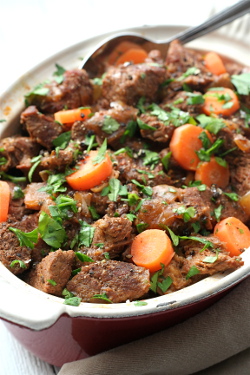

by Kristin Jensen
A warming bowl of stew, a chunky soup or chowder or a golden, steaming pot pie all beg for a beer to be served alongside them. And if they can be enjoyed together while sitting in front of a fire in the pub on a cold, rainy March day, then so much the better.
But beer is also fantastic when added directly to the dish itself, especially when you cook with a craft beer. The depth of flavour you find in an artisan beer goes right into the pot, adding that much more complexity to the food. In the same way that you should only cook with a wine you’d want to drink, use a top-quality craft beer to get the best results in a stew.
Beers like porters, stouts and ales lend themselves particularly well to hearty dishes, such as beef, chorizo and ale stew; beef, stout and blue cheese pot pies; or a sausage and bean hotpot with red ale. This is because the caramelised, roasted flavours of these darker beers pick up on the similar flavours in the roast meat. For something lighter, like a seafood chowder, try adding a bit of pilsner.
The most popular beer and stew combination is, of course, a beef and stout stew. Walk into any pub in the country that’s serving food and there’s a good chance they’ll have it on the menu. It’s a classic dish that features strongly at this time of year, when everyone’s looking for something traditional and tasty to serve on St Patrick’s Day. My version has a secret ingredient – some dried porcini mushrooms and their soaking liquid for an extra umami hit.
For an unbeatable version, make your next beef and stout stew with an Irish craft stout and be sure to buy an extra bottle to sip alongside. As the saying goes, there’s both eating and drinking in it. Sláinte!

Serves 4
To make this into a one-pot meal, add some whole baby potatoes right into the stew along with the stout, beef stock and herbs instead of serving with mashed potatoes. Like most stews, this one actually improves in flavour after a day, so the leftovers are even better.
Craft beers to try with this recipe are Dungarvan Black Rock Irish Stout, Eight Degrees Knockmealdown Porter, O’Hara’s Leann Folláin Stout or Whitewater Brewery Belfast Black.
olive oil
1 kg stewing beef, cut into 1-inch pieces
25 g flour
salt and freshly ground black pepper
10 g dried porcini mushrooms
4 carrots, cut into thick slices
2 onions, roughly chopped
3 large garlic cloves, chopped
2 tablespoons tomato paste
1 tablespoon Worcestershire sauce
1 tablespoon dark soy sauce
1 tablespoon chopped fresh thyme
500 ml stout
500 to 750 ml beef stock
freshly ground black pepper
2 bay leaves
champ, colcannon or mashed potatoes, to serve
chopped fresh parsley, to garnish
Preheat the oven to 180°C.
Heat some olive oil over a medium heat in a Dutch oven or a large, heavy-bottomed pot. While the oil is heating up, pat the beef dry with paper towels and toss it in the flour seasoned with some salt and pepper, making sure all the pieces have a dusting of flour.
Tap off any excess flour, then brown the beef in batches in the pot for about 5 minutes per batch, turning occasionally. Don’t crowd the pot, otherwise the beef will steam instead of brown, and don’t be tempted to raise the heat too high or the flour will stick to the bottom of the pot too much. Transfer the browned beef to a plate and set aside.
While the beef is browning, put the dried mushrooms in a bowl and pour over 125 ml just-boiled water to rehydrate them. Set them aside to steep, since you’ll be using the soaking liquid later on.
Once all the beef is browned, add the carrots and onions to the pot along with a pinch of salt to keep the onions from browning. Cook for 10 minutes, until the vegetables are softened.
Add the garlic and cook for 1 minute. Strain the mushrooms from their soaking liquid (save the liquid!) and finely chop them, then add them to the pot along with the tomato paste, Worcestershire sauce, soy sauce and thyme, stirring to coat all the vegetables. Cook for 1 minute more.
Add in a little of the stout to deglaze the pot, scraping up as much of the browned bits as you can. Add in the rest of the stout, the mushroom soaking liquid and 500 ml of the beef stock, then add the beef back to the pot along with any juices from the plate and a generous grinding of black pepper. Stir to combine everything, then drop in 2 bay leaves.
Cover the stew and bring it to a boil, then either transfer it to the oven and let it cook for 1 1/2 to 2 hours, or else reduce the heat to medium and simmer it, uncovered, on the stovetop. Either way, stir it from time to time and add in any or all of the remaining 250 ml of beef stock if you think it needs it. The stew is done when the beef is fork tender and the liquid has reduced and thickened a bit.
To serve, spoon off any fat that may have risen to the top of the stew and taste for seasoning. Spoon some champ, colcannon or mashed potatoes into individual shallow bowls or plates, making a well in the centre. Ladle the stew on top of the potatoes, garnish with the chopped parsley and serve.
Kristin Jensen is a freelance editor specialising in cookery and food books and has worked with many of Ireland's top food writers and chefs. She writes the Edible Ireland blog and is a co-founder of the Irish Food Bloggers Association
Top Tips for Beer & Food Matching - Beer & Bread
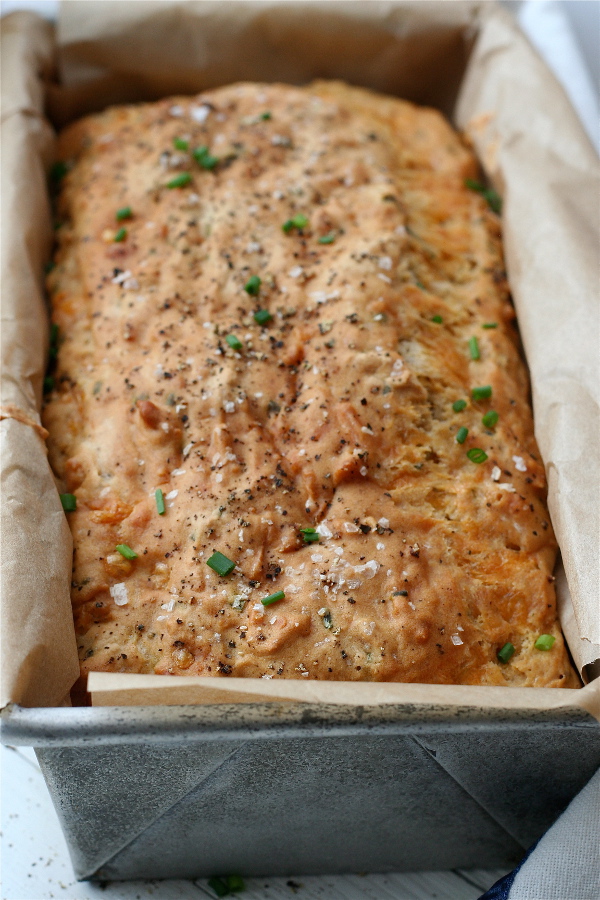
 They say bread is the staff of life … or should that be beer? There’s a theory that agriculture developed in order for societies to grow enough wheat and barley not so that they could bake bread, but make beer.
They say bread is the staff of life … or should that be beer? There’s a theory that agriculture developed in order for societies to grow enough wheat and barley not so that they could bake bread, but make beer.
The earliest known recipe is for beer – the famous Hymn to Ninkasi. In ancient Egypt, bread and beer were staples of the diet for rich and poor alike. Some archaeologists even go so far as to say that beer played a fundamental part in the formation of civilisation. At any rate, bread and beer are two sides of the same coin.
Both are made from yeast and grain and both are fermented (in the case of sourdough bread). According to Garrett Oliver in The Brewmaster’s Table, all ancient brewing started with the making of bread and the words ‘brewing’ and ‘bread’ are even linguistically related.
So why not get the best of both worlds and use beer directly in bread? The next time you make bread – or even pizza dough – try replacing half of the liquid with beer. The malt in the beer will lend a slightly nutty flavour and it will give a good colour to the bread too, like in a stout brown bread. Just remember that the stronger the flavour of the beer, the stronger the flavour of the bread.
A quick, easy, basic beer bread is a great way to start experimenting with bread and beer. This cheddar, chive and ale bread is fantastic as part of a ploughman’s lunch, alongside a hearty bowl of soup or toasted and served with a fried egg on top.
The basic recipe is 300g of self-rising flour and 350ml of beer, so play around with different add-ins (chopped crispy bacon immediately springs to mind), cheeses, herbs and types of beers.
Sláinte!
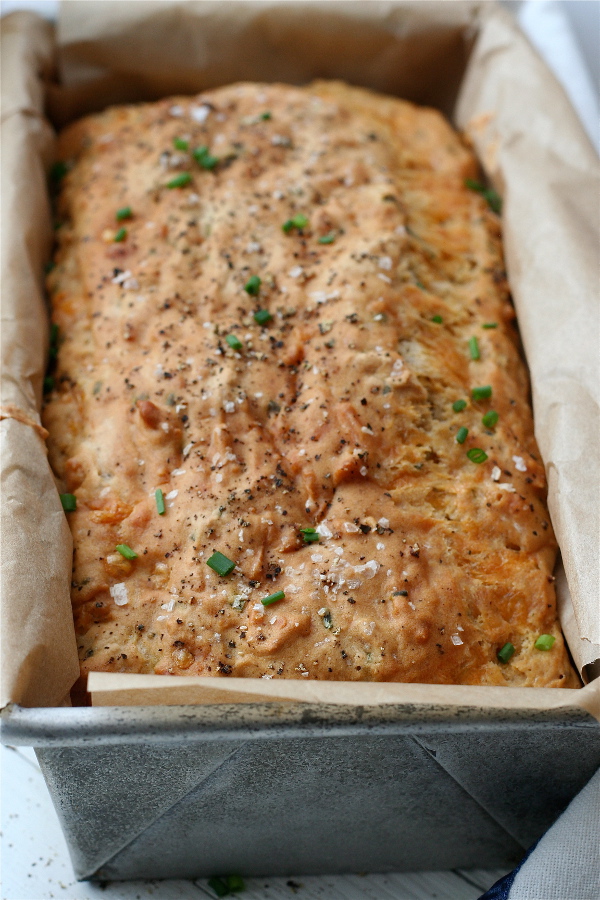
Makes 1 loaf
300g self-rising flour
125g mature cheddar, grated
2 tablespoons finely chopped chives
1/4 teaspoon salt
freshly ground black pepper
350ml ale
Preheat the oven to 190°C. Grease or line a 1 lb loaf tin.
Put the flour, cheddar, chives, salt and a generous grinding of black pepper in a large bowl and stir well to combine. Pour in the beer and mix well.
Pour the batter into the loaf tin and crack over another grinding of black pepper and a pinch of flaky sea salt if you have it.
Bake in the oven for 50–55 minutes, until the bread is cooked through and it sounds hollow when you tap it. Turn the bread out of the tin and place it back in the oven, directly on the oven rack, for 5 minutes.
Cool on a wire rack for at least 1 hour before you slice it.
Kristin Jensen is a freelance editor specialising in cookery and food books and has worked with many of Ireland's top food writers and chefs. She writes the Edible Ireland blog and is a co-founder of the Irish Food Bloggers Association
Top Tips for Beer & Food Matching - Beer & Curry


In the fourth of a series which shows how to get the best from some specific food and beer pairings, our expert columnist and food blogger KRISTIN JENSEN gives her tips on matching Beer and Curry - a classic, unbeatable partnership…
It’s Friday night, and the takeaway is beckoning. What could be a better way to end the week than a curry and a craft beer?
Curry and beer is a classic, unbeatable match. The carbonation and hop bitterness in beer work wonders when put up against a spicy curry. The bubbles provide a much-needed lift, cleansing your palate and letting you taste each bite fresh by scrubbing the spices away, while the hop bitterness cuts through the spiciness in a curry, both in terms of flavour and heat.
If you love fiery hot curries, keep an eye on the alcohol level of whatever beer you match with it – the higher the ABV, the hotter it makes the heat!
IPAs and lagers tend to be the most popular pairings with a curry, but blonde ales, pilsners and wheat beers can sing too. Try these:
• A hoppy IPA with a highly spiced curry, like Ma Aruna’s curry
• Blonde ale or lager with a chicken tikka masala
• Wheat beer with a creamy korma
• Pilsner or golden ale with a rogan josh
Why not skip the takeaway and make your own curry? It’s easier than you think. This recipe comes from Sarajit Chanda, chef-owner at The Fuchsia House Restaurant in Ardee, Co. Louth, whose mother passed it down to him.
Or to make life even easier, pop one of the chilled Aruna sauces (named after Sarajit’s mother) into your shopping trolley for authentic, restaurant-quality food at home – the sauces have recently launched nationwide at Tesco stores.
Either way, matching a curry with the right craft beer makes the best of both worlds.

Recipe courtesy of Sarajit Chanda at The Fuchsia House Restaurant, Ardee, Co. Louth
Serves 4
A hoppy, zesty IPA is a great match with this curry. Try O’Hara’s Irish Pale Ale, Galway Hooker or Porterhouse Hophead.
100ml vegetable oil
2 onions, diced
4 cloves garlic, minced
3cm piece of fresh ginger, peeled and finely chopped
6 cardamom pods, seeds crushed
6 bay leaves
5 cloves
1 cinnamon stick
1 tbsp turmeric
1 tbsp ground cumin
1 tbsp chilli powder
1 tsp ground coriander
1 whole chicken, cut into 8 pieces, or 6 breasts, diced
1 tsp salt
cooked basmati rice, to serve
fresh coriander, to garnish
Heat the vegetable oil in a heavy-bottomed saucepan. When the oil is hot, reduce the heat to medium. Add the onions and cook for 10 minutes, until soft. Add the garlic and ginger and cook for 1 minute more.
Add the cardamom, bay leaves, cloves and cinnamon and cook for 3 minutes. Add the turmeric, cumin, chilli powder and ground coriander and cook for 1 minute more. Pour in 100ml water, then stir for 5 minutes.
Nestle the chicken into the pan, add the salt and cover the chicken in the sauce. Cook for 20 minutes. Pour in 600ml water and simmer for 20 minutes more, until the sauce has reduced. Discard the whole bay leaves, cloves and cinnamon stick.
Serve the curry with basmati rice and garnish with fresh coriander.
Kristin Jensen is a freelance editor specialising in cookery and food books and has worked with many of Ireland's top food writers and chefs. She writes the Edible Ireland blog and is a co-founder of the Irish Food Bloggers Association
Top Tips for Beer & Food Matching - Beer & BBQ
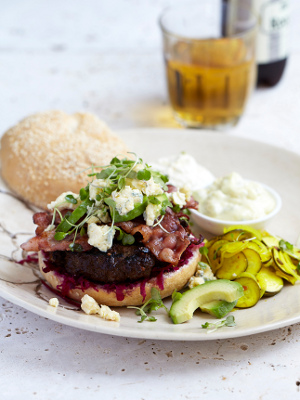
 In the fifth of a series which shows how to get the best from some particular food and beer pairings, our expert columnist and food blogger KRISTIN JENSEN gives her tips on matching Beer and BBQ - a partnership that will repay some careful thought...
In the fifth of a series which shows how to get the best from some particular food and beer pairings, our expert columnist and food blogger KRISTIN JENSEN gives her tips on matching Beer and BBQ - a partnership that will repay some careful thought...
Ireland is hard to beat on a warm, sunny summer’s day. If only we had more such days, I hear you sigh. We begin every June full of optimism that this year will be the one that makes up for all the washouts of the past few summers and that our weekends will be spent presiding over the barbecue instead of the hob, inviting friends or neighbours around for impromptu burgers and beers.
Barbecue and beer is an intuitive match. Hot weather, cold beer and flavourful food – it’s a no-brainer. But precisely because barbecued food has so much flavour, so you want a beer that not only can stand up to the food, but enhance it too. This is where craft beer beats its bland big brand counterparts, hands down. Here are a few suggestions:
• Burgers: Pale ales and IPAs stand up well to the meaty intensity of a burger.
• Chicken: A red ale will complement the charred flavours of barbecued chicken.
• Pork: The caramelised malt in red ales is a good pairing for sweet, grilled pork, especially sausages. Or try a good, crisp, cold craft cider – apples and pork have a natural affinity for each other and cider is a favourite summer drink.
• Seafood: Lighter beers like a wheat beer, pilsner or blonde ale are good choices for more delicately flavoured seafood.
If you’re slathering everything with the same barbecue sauce, which will probably be both sweet and acidic, then a crisp lager would be a good overall choice and is always a popular beer at barbecues. Steer clear of hoppy IPAs though – the flavours of the barbecue sauce and the beer will compete with each other instead of contrast or complement, which is what you’re aiming for when matching beer and food.
Chef Rozanne Stevens has just written an entire book, Relish BBQ, dedicated to barbecue recipes that will tempt you no matter what the weather – look for it in all good bookshops or buy direct from Rozanne’s website, www.rozannestevens.com. She has shared her black pudding burgers recipe from the book here, they match beautifully with an ale or even a stout.
But no matter what you’re grilling or what kind of beer you’re drinking with it, here’s hoping for plenty of barbecue-worthy weather this year. Sláinte!
 Black Pudding Burgers
Black Pudding Burgers
Recipe and photo from Relish BBQ by Rozanne Stevens
Makes 4 burgers
The earthiness of the black pudding in these burgers means a stout or porter is a perfect complementary pairing, especially if the weather on the day of your barbecue is colder and rainier than you’d hoped for. To contrast flavours, try an ale, which cuts through the hearty meat.
500g steak mince
280g black pudding, crumbled
1 small red onion, finely diced
burger buns, to serve
Mix the mince, black pudding and diced onion together with clean, wet hands, but don’t overhandle. Shape into 4 firm, round burger patties. Cover and chill in the fridge for 1 hour to firm up.
Cook under the grill, on a pan or ideally a BBQ. Cook evenly on both sides for 8–10 minutes, until cooked through. Serve in a lightly toasted bun with a topping of your choice.
Rozanne’s favourite toppings for black pudding burgers:
• Bacon, avocado and blue cheese: Add crispy rashers, slices of ripe avocado and Cashel Blue cheese.
• Pickled cucumber: Thinly slice 1 large cucumber and place in a heatproof bowl. Put 125ml white wine vinegar, 1 clove of peeled garlic, 1 bay leaf, 2 tablespoons fresh chopped dill, 2 teaspoons sugar, 1 teaspoon salt and 1 teaspoon mustard seeds in a small pot and bring to the boil. Pour the pickling mixture over the cucumbers, allow to cool and serve.
• Pickled or roasted beetroot: Grate fresh, peeled, raw beetroot into a bowl. Cover generously with balsamic vinegar and season with salt and pepper. Add a few fresh rosemary sprigs and allow to ‘pickle’ for 20 minutes.
• Blue cheese mayonnaise: Mash together 1 clove of crushed garlic, 4 tablespoons mayonnaise, 1 tablespoon blue cheese and freshly ground black pepper.
• Horseradish crème fraîche: Mix 4 tablespoons crème fraîche with 1 clove of crushed garlic, 1 tablespoon horseradish sauce, a good squeeze of lemon juice and some salt and freshly ground black pepper.
Top Tips for Beer & Food Matching - Beer & Pizza
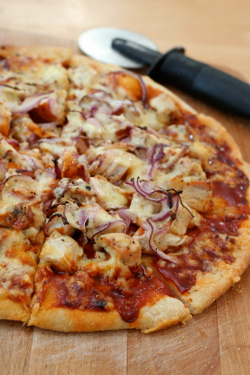
 In the sixth of a series which shows how to get the best from particular food and beer pairings, our expert columnist and food blogger KRISTIN JENSEN gives her tips on matching Beer and Pizza - a perfect partnership that should be fun...
In the sixth of a series which shows how to get the best from particular food and beer pairings, our expert columnist and food blogger KRISTIN JENSEN gives her tips on matching Beer and Pizza - a perfect partnership that should be fun...
Pizza and beer are best mates, kicking back and shooting the breeze on a Saturday night, casual in the way only the oldest friends can be. It’s hard to think of a food pairing that’s more effortless and fun than cheesy slices of pizza and cold bottles of beer.
It stands to reason that just as beer and cheese is a match made in heaven, so is beer and pizza. The carbonation in beer cuts through the fat in cheese and its creamy texture and scrubs your palate clean, letting you taste the next bite fresh. And of course the yeasty, bready flavours in beer pick up on the same flavours in the pizza dough.
With such a limitless range of toppings, it’s hard to suggest definitive beer and pizza pairings. A good rule of thumb is that plainer pizzas, such as a simple margherita, go well with lighter beers, but as you start to pile on the toppings, you’ll need a stronger-flavoured beer to keep up with all those flavours.
• A biscuity, bready pilsner or an Oktoberfest marzen pair well with plainer pizzas, complementing the bread base without being overwhelmed by toppings. A light lager is also a good all-round choice.
• The malty, caramel, slightly sweet flavours in a red ale balance well with a tomato sauce and also help to neutralise its acidity. A fruity red ale is also a good match if your toppings include sausage or bacon.
• Just as a pale ale and a spicy curry are a classic combination, try a pale ale with spicy pizza. The hop bitterness cuts through the spiciness, both in terms of flavour and heat.
• A stout or porter will work well with a particularly salty pizza, such as an anchovy pizza, a salty and sweet pissaldiere or a pizza with blue cheese.
If you want to make pizza at home, try swapping out some of the water in the pizza dough for beer to add an extra dimension of flavour and to help the dough colour faster while it’s baking in the oven. And everyone loves a secret ingredient, so I’ll let you in on the one in my tomato sauce: anchovy paste. Don’t worry, it doesn’t make the sauce taste at all fishy, it just adds a little hit of umami savouriness.
Sláinte!
 Secret Ingredient Tomato Sauce
Secret Ingredient Tomato Sauce
Makes more than enough for 2 pizzas
1 x 300g jar tomato puree
175ml water (or more if you prefer a thinner sauce)
2 or 3 garlic cloves, finely minced
25g finely grated Parmesan cheese
2 teaspoons anchovy paste (optional, but come on, it’s the secret ingredient!)
1/2 teaspoon dried basil
1/2 teaspoon dried oregano
1/4 teaspoon dried chilli flakes (optional)
salt and freshly ground black pepper
pinch of sugar
Combine the tomato puree and water in a small bowl, stirring to combine. Add the garlic, Parmesan, anchovy paste, basil, oregano and chilli flakes. Mix everything together and add salt and pepper to taste, but take it easy on the salt if you’ve used the anchovy paste, as it’s quite salty.
Add a generous pinch of sugar (or to taste) to counteract the acidity of the tomato puree. Allow the sauce to stand for at least 30 minutes to marry the flavours (though the longer you can leave it, the better), then taste again and adjust the seasoning if needed.
Spread the sauce over your pizza dough, leaving a 1cm border clear around then edges, then pile on the toppings. Use any leftovers as a pasta sauce, or freeze.
Kristin Jensen is a freelance editor specialising in cookery and food books and has worked with many of Ireland's top food writers and chefs. She writes the Edible Ireland blog and is a co-founder of the Irish Food Bloggers Association
Top Tips for Beer & Food Matching - Beer & Seafood
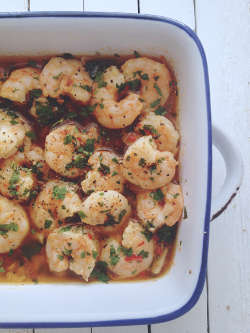
 In the latest of a series which shows how to get the best from particular food and beer pairings, our expert columnist and food blogger KRISTIN JENSEN gives her tips on matching Beer and Seafood - a partnership that offers far more than the usual pairing of stout and shellfish
In the latest of a series which shows how to get the best from particular food and beer pairings, our expert columnist and food blogger KRISTIN JENSEN gives her tips on matching Beer and Seafood - a partnership that offers far more than the usual pairing of stout and shellfish
Seafood is the ultimate fast food – often taking only minutes to cook, which makes it the perfect choice for hot summer evenings when you don’t want to turn on the oven or spend too much time in the kitchen – and a cold beer is a perfect partner for it.
There’s more to seafood and beer pairings than just the classic oysters and stout. The key thing to remember when matching seafood and beer is that seafood tends to be less robust than other meaty dishes, so you need to pick a beer that won’t overwhelm its lighter, more delicate flavours.
Good beer styles to match with a wide range of seafood are wheat beer (especially shellfish), blonde ale and pilsner. An IPA is a good match for smoked fish, spicy seafood dishes or deep-fried fish, where the hoppy bitterness helps to cut through the oiliness. And of course a stout is a classic match for oysters, but it also matches well with scallops, crab and lobster too.
I’ve included a recipe for one of my favourite recipes this summer, prawns pil pil, a zippy little dish that hits the spot as a light summer supper. If you want to serve an IPA with this spicy dish, try to choose one that isn’t too hop forward, or it will overwhelm the flavours of the food.
One of my favourite beers to pair with this dish is Dungarvan Brewing Company’s Helvick Gold Irish Blonde Ale. Or you might also like to try one of the newest Irish craft beers, Mountain Man Brewing Company’s Green Bullet, an American-style pale ale.
But whatever you choose, remember that as with all beer and food matching, it’s all about experimenting and having fun.
Sláinte!
 Prawns Pil Pil
Prawns Pil Pil
Serves 2 as a light main course or 4 as a starter
You could also add a squeeze of fresh lemon juice at the end of the cooking time if you’d like a little acidic edge to the dish.
50g butter
100ml olive oil
3–4 large garlic cloves, sliced
1 red chilli, finely chopped
1/4 teaspoon smoked paprika
24 prawns or gambas, shelled and deveined (about 250g prepared weight)
handful of fresh flat-leaf parsley, finely chopped
salt and freshly ground black pepper
crusty bread, to serve
Place the butter and olive oil in a large frying pan, ideally one that’s big enough to accommodate all the prawns later on. Add in the garlic, chilli and smoked paprika and gently melt the butter over a medium-low heat. Remove from the heat and set aside for 30 minutes to allow the flavours to infuse.
When you’re ready to cook, return the pan to a medium heat. When the butter is sizzling, add the prawns to the pan in a single layer (you may need to do this in batches, depending on the size of your pan).
Cook the prawns for 2–3 minutes, then turn them over and cook for 1–2 minutes more, until the prawns have curled up and are just firm and cooked through.
Stir through the parsley and season with salt and pepper.
Serve with plenty of crusty bread to mop up the spicy, buttery sauce.
Kristin Jensen is a freelance editor specialising in cookery and food books and has worked with many of Ireland's top food writers and chefs. She writes the Edible Ireland blog and is a co-founder of the Irish Food Bloggers Association
Top Tips for Beer & Food Matching - Stout & Oysters
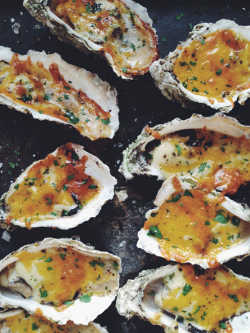
 In the latest of a series which shows how to get the best from particular food and beer pairings, our expert columnist and food blogger KRISTIN JENSEN gives her tips on matching Stout and Oysters - a classic partnership that offers plenty of scope for imaginative variations
In the latest of a series which shows how to get the best from particular food and beer pairings, our expert columnist and food blogger KRISTIN JENSEN gives her tips on matching Stout and Oysters - a classic partnership that offers plenty of scope for imaginative variations
A pint of stout and a dozen oysters is one of life’s little luxuries. We now think of stout and oysters as an upscale, elegant pairing, but the origins of this match are quite humble. In the 18th and 19th centuries, oysters were commonplace and cheap, food for the working classes.
It was only when oyster beds started becoming exhausted towards the beginning of the 20th century, and hence oysters became scarcer and more expensive, that they became the delicacy we think of them as today.
At the same time as the oyster beds were flourishing, so, too, was stout and the two were often served together in pubs and taverns as a kind of cheap and cheerful meal or bar snack. The bitter, roasted, smooth flavour of a dry Irish stout is a beautiful contrast to the creamy, salty, sweet oysters.
‘One can almost imagine the beer as the knife that cracks the oyster open – there seems to be a primal connection between them. The flavour of the oyster is magically magnified and fills the senses,’ writes Garrett Oliver in The Brewmaster’s Table.
And then there are oyster stouts. This can refer either to a beer designed to be sipped alongside oysters or to a stout with oysters added directly to it. Some brewers just use the shells (as a clarifying agent), while others add the oyster itself.
The result is often a barely discernible brininess and a more full-bodied mouthfeel from the protein in the oyster. Try one for yourself and see – in Ireland, Porterhouse makes an oyster stout, with fresh oysters shucked directly into the conditioning tank.
Native Irish oysters are in season now through March. There are several oyster festivals throughout Ireland at this time of year, and you can be sure that stout will feature prominently. The most famous (and the world’s longest-running) is the Galway International Oyster and Seafood Festival, which takes place on 26–29 September this year.
Also in County Galway is the Clarenbridge Oyster Festival. In Northern Ireland, the Hillsborough International Oyster Festival takes place in September too, while the Carlingford Oyster Festival in County Louth is held in August. The festivals are a great day out – and a great opportunity to enjoy the classic stout and oyster pairing.
Sláinte!

recipe courtesy of chef Mark Campbell and Matt Skeffington, owner of Artisan
Makes 18 oysters
With the addition of some Galway Hooker pale ale to the sauce, this recipe is like a Welsh rarebit for oysters. Artisan says you can spice this up by adding some cayenne pepper to the flour.
18 oysters
25g butter
1 shallot, finely chopped
25g plain flour
150ml milk
1 tbsp Dijon mustard
1 1/2 tsp chopped fresh chervil or parsley
1 1/2 tsp chopped fresh tarragon
salt and freshly ground black pepper
125ml Galway Hooker pale ale (or any craft pale ale)
splash of cream
100g Killen Ballinnasloe soft Cheddar Cheese, grated
lemon wedges, to serve
Preheat the grill. Open the oysters, discard the top shell and loosen the oysters, leaving them in the half shell. Place the oysters on a baking tray.
Melt the butter in a heavy-based saucepan. Add the chopped shallots and cook on a low heat for 4–5 minutes, until softened but without colouring.
Sprinkle in the flour, stirring constantly for 2 minutes. Remove the pan from the heat and gradually add the milk. Return to the heat and bring to the boil, whisking until the sauce is thickened and smooth.
Reduce the heat and stir in the mustard and herbs. Season to taste with salt and pepper. Remove from the heat and whisk in the ale and cream, then return to a low heat and stir until thickened.
Place a tablespoon of the mixture in each oyster, then sprinkle the cheese over the top. Cook under the preheated grill until golden and hot. Serve with lemon wedges.
Kristin Jensen is a freelance editor specialising in cookery and food books and has worked with many of Ireland's top food writers and chefs. She writes the Edible Ireland blog and is a co-founder of the Irish Food Bloggers Association
Matching Cider & Food
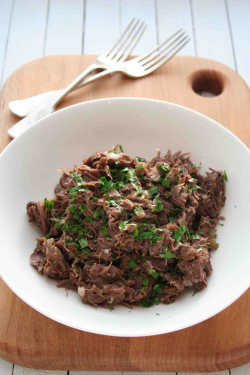

In the latest of a series which shows how to get the best from particular food and beer pairings, our expert columnist and food blogger KRISTIN JENSEN gives her tips on matching a different kind of brew - Cider and Food - an age-old partnership and, for small production units, a seasonal treat too
With smoke starting to curl from chimneys, the nights drawing in earlier now and the last of the colour fading from the trees, thoughts naturally start to turn towards wood stoves, woolly scarves and apples.
Cider is often thought of as a summer drink, served in pubs in pint glasses crammed full of ice, but it can really come into its own in the autumn and when matching it with food.
Broadly speaking, there are two kinds of cider produced in Ireland: sweet and dry. Dry cider tends to be quite tannic, acidic and light bodied, while sweet cider has a more pronounced appley, fruity flavour and a more rounded body. Dry ciders and sweet ciders are not created equal when it comes to matching cider and food, so take note of which kind you have at home or which you prefer.
You might be surprised at how many foods cider can pair with. Its natural fruitiness makes it easy to drink and easy to pair with food. The same guidelines that apply to matching beer and food apply to cider too: decide whether you want to complement or contrast flavours, pair like with like and think seasonally.
A good rule of thumb to start with is that if a certain dish or food goes well with white wine, then chances are that it will also pair nicely with a fruity cider. This is because cider’s lighter, more delicate flavour complements lighter, delicate foods.
Pairing a fruity cider with fruity dishes is the easiest, most intuitive match. This applies to both sweet and savoury dishes – an apple crumble or pork with roasted apples will both get a lift when served with an equally fruity cider.
Cider loves pork. Pork belly, sausages, chops, ham and bacon will sing when served with a good cider to drink alongside, as the sweetness of the cider is a classic contrast to the salty pork. The delicate flavour of cider also plays well with chicken, as opposed to more heavy-hitting meats like beef, which would overwhelm it. Try hearty, wintry dishes like chicken casseroles, creamy chicken pies or a roast chicken with its crisp, salty skin with a cider.
Seafood and cider can work well together too. Light fish – and even oysters – and dry cider are a good match in much the same way that white wine and seafood is.
Believe it or not, sweet cider also matches well with Asian food and spicy curries, helping to cut through the heat. A dry cider, however, can emphasise spiciness or acidity unpleasantly, so steer clear of those.
When it comes to vegetables, think seasonally. Cider and, say, a butternut squash gratin, a creamy cauliflower cheese or a wild mushroom risotto will work well together. A sweet cider will also complement the sweetness of roasted autumnal vegetables, such as roasted onions and fennel.
Cider is also a beautiful match with cheese. Cider and a strong cheddar is the most well-known match, but it also works well with Camembert and creamy cheeses. Sweet cider can also contrast nicely with salty blue cheeses, while the earthy mustiness of washed rind cheeses complement those same qualities in sweet cider.
Or try a dry cider with sheep’s milk or goat’s milk cheeses. Best of all, perhaps, why not try Longueville House Irish Apple Brandy with your cheeseboard - Ireland’s only apple brandy, it is a distillation of their beautiful cider ad makes an unusual treat to round off a special meal.
You’ll often find cider added directly to the same types of dishes that they match well with – think creamy sauces, ham cooked in cider or cider-brined pork chops. Or try Niamh Shields’s (www.eatlikeagirl.com) recipe for slow-cooked pork cheeks in cider, the perfect dish – and drink – for this time of year.
Sláinte!
 Slow-cooked Pork Cheeks in Cider
Slow-cooked Pork Cheeks in Cider
adapted from Comfort & Spice by Niamh Shields (eatlikeagirl.com)
Serves 4
It’s easy to rave about this recipe – pork so tender that it’s practically melting and a cider-laced stock that’s so deeply savoury you’d happily slurp it up with a spoon straight from the pot.
I adapted Niamh’s recipe only slightly to cook everything in the same pot, rather than cooking the pork cheeks in a separate pan. I also found that I only needed 500ml of stock instead of the 750ml called for.
2 tablespoons light oil
1kg pork cheeks, trimmed by your butcher
5 shallots or 2 onions, finely chopped
3 garlic cloves, finely chopped
500ml dry hard cider
500–750ml chicken or pork stock
1 tablespoon Dijon mustard
2 bay leaves
handful of fresh flat-leaf parsley, chopped, to garnish
mashed potatoes, to serve
Heat the oil in a Dutch oven or heavy-bottomed pan over a medium heat. Brown the pork cheeks in batches, taking care not to overcrowd the pan, otherwise they will stew. Set aside.
Add the shallots or onions to the pan and saute for about 10 minutes, until they start to soften without going brown. Add the garlic and sauté for a minute or so.
Deglaze the pot with a little of the cider to mop up all those lovely pork bits. Add in the rest of the cider along with the pork cheeks. Bring to a boil and reduce the cider by about one-third. Add 500ml of stock, the mustard and bay leaves and give it all a good stir.
Reduce the heat, cover and cook gently over a low heat on the hob for 2 1/2 hours, stirring occasionally. (Alternatively, cook, covered, in an oven preheated to 150°C for the same amount of time, stirring occasionally.)
Keep an eye on the liquid and add in some or all of the remaining 250ml of stock if it’s reducing too much on the stovetop or looks too dry – you want most of the pork cheeks to be submerged.
Check that the pork is fork-tender and pulls away at the slightest touch; that’s when it is done. Remove from the heat and stir in the parsley. Serve hot with mashed potatoes and plenty of the cider cooking liquid poured over.
Kristin Jensen is a freelance editor specialising in cookery and food books and has worked with many of Ireland's top food writers and chefs. She writes the Edible Ireland blog and is a co-founder of the Irish Food Bloggers Association
Top Tips for Beer & Food Matching - Beer & Beef
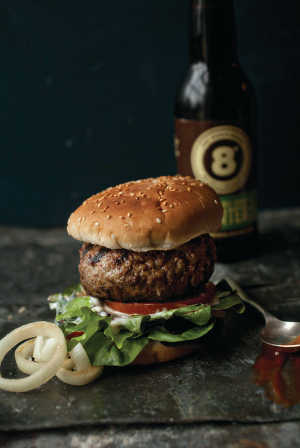
 In the latest of a series which shows how to get the best from particular food and beer pairings, our expert columnist and food blogger KRISTIN JENSEN gives her tips on matching beer and beef - the ultimate ‘dude food’ combo -
In the latest of a series which shows how to get the best from particular food and beer pairings, our expert columnist and food blogger KRISTIN JENSEN gives her tips on matching beer and beef - the ultimate ‘dude food’ combo -
Beef and beer is the ultimate ‘dude food’ combo. Which of course is not to say that ladies don’t love it too, but you know the kind of thing I’m talking about: burgers, pot pies, spicy chilli and big heaping bowls of stew. Rib-sticking stuff.
Beer’s hoppy bitterness is a good contrast for the richness of beef, while roasted and caramelised malt flavours complement those same flavours in roasted or chargrilled beef. And don’t forget that beer’s carbonation also works to counteract heavy foods and strong flavours, scrubbing your palate clean to enjoy the next bite.
Generally speaking, you need a strong, earthy beer with a heavier body to stand up to beef’s bold flavour. Strong ales and malty beers like stouts and porters are good contenders. If you can, try to pick a beer that has a sharper, hoppy edge, as opposed to one that’s on the sweet side, to play up the contrast between the beef and the beer. Some Irish craft beers to try are O’Hara’s Leann Folláin Full-bodied Extra Irish Stout, White Gypsy Belgian Dubbel and of course the Eight Degrees Knockmealdown Porter used in the burger recipe below.
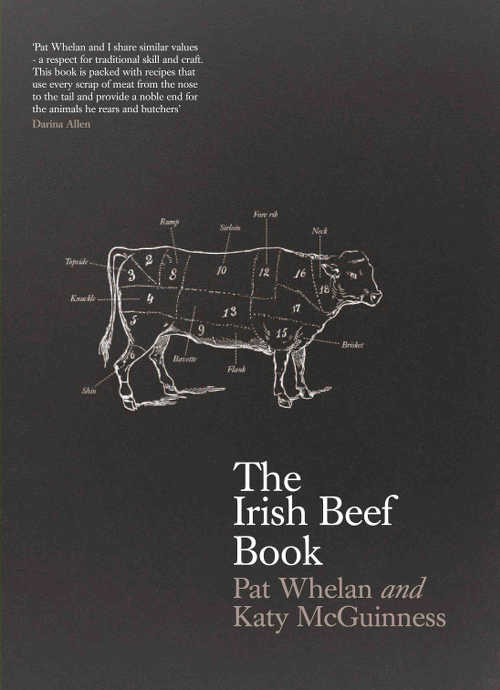 If you’re looking for Christmas gift ideas for the carnivore in your life, look no further than The Irish Beef Book by Pat Whelan and Katy McGuinness, a definitive guide to cooking with all kinds of cuts of beef.
If you’re looking for Christmas gift ideas for the carnivore in your life, look no further than The Irish Beef Book by Pat Whelan and Katy McGuinness, a definitive guide to cooking with all kinds of cuts of beef.
What’s more, there are several recipes in the book that incorporate beer directly into the dish: beef cheeks and white turnips in beer with a parsley dressing; Rick Stein’s beef, Guinness and oyster pie; braised beef shin and Eight Degrees ale pie; and these Knockmealdown burgers. Why not pair a copy of the book with a selection of Irish craft beers for the ultimate gift? As the saying goes, there’s both eating and drinking in it.
Sláinte!
Knockmealdown Burgers
from The Irish Beef Book by Pat Whelan and Katy McGuinness (Gill & Macmillan)
For a burger with the flavour of sweet caramelised onions, try this recipe using Knockmealdown porter, one of our favourite craft beers, produced by Eight Degrees in the beautiful Ballyhoura region of Co. Cork.
 Makes 6 burgers
Makes 6 burgers
1 tablespoon rapeseed oil
1 large onion, finely chopped
1 kg coarsely ground beef mince (80:20 ratio of meat to fat)
100 ml Eight Degrees Knockmealdown porter
2 tablespoons brown breadcrumbs
2 teaspoons finely chopped parsley and/or thyme
1 teaspoon sea salt
freshly ground black pepper
Heat the oil in a frying pan over a low heat and fry the onion slowly for about 20 minutes, until soft and slightly browned. Leave to cool.
Combine the beef with the onion, stout, breadcrumbs, herbs and seasoning. Divide the meat mixture into six, and form into flat burgers, pressing a dimple into the centre of each, which will help them to remain flat during cooking.
Cover and chill for an hour so that the burgers will retain their shape and hold together during cooking.
Cook on the barbecue, or on a heavy, cast iron ridged griddle pan preheated to smoking.
There is no need to oil either the grill or the burgers, but if you are concerned that they might stick (because you have used very lean meat), lightly brush the burgers with oil. Place on the grill for about 4 minutes per side for medium rare.
Kristin Jensen is a freelance editor specialising in cookery and food books and has worked with many of Ireland's top food writers and chefs. She writes the Edible Ireland blog and is a co-founder of the Irish Food Bloggers Association
Show me all Article


